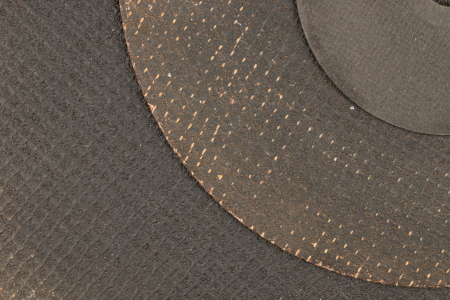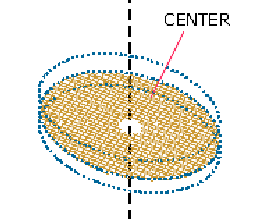The Role of Reinforcement in Abrasive Cut-Off Wheels

Abrasive Cut-off wheels range from 1� to 1600mm (62�) and are used on manual power tools, gas saws, chop saws, swing saws and more. They are self-sharpening wheels that are thin in width. �By thin a good rule of thumb is 1% of the wheel diameter. As an example, a 20� diameter cut off wheel should be approximately .200 thick.
Given that these wheels are thin they often need fiberglass reinforcement for various amounts of strength and support. Fiberglass generates heat so the less the better but, in some cases, where pieces are cut off manually and can flex safety outweighs heat.
What are the most common types of fiberglass reinforcement?
No Reinforcement � used where you can have little to no heat generated. An example of this would be metallurgical cut-off applications. Metallurgical non-reinforced wheels are fragile and can break if exposed to too much pressure or flex.
Single internal � Minimal reinforcement also used often in metallurgical applications. Single internal glass will still cut freely without burn but will flex more without breaking vs a wheel with no reinforcement.

�Single internal with Hub glass � In many chop saw applications where cutting pressures are high but burn on the part is not acceptable single internal glass with hubs will allow the wheel to cut � freely but will add support at the arbor hole.

�Dual External � Full dual external glass is the strongest reinforcement you can have and is recommended for the most severe applications. Push saws, Swing frame saws and Gas Saws are almost always Dual External glass.

�Dual Internal with hubs � In cases where strength is critical but burning is also important the second strongest would be Full Dual Internal glass with Hubs.

�There are other types of Fiberglass reinforcement such as Full Triple glass (Full Dual External and Single Internal) and Full Dual Internal but these are far less common than the examples shown above.
